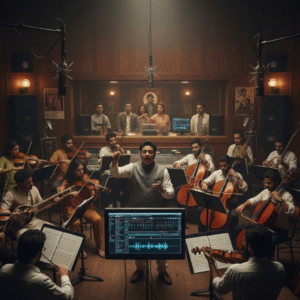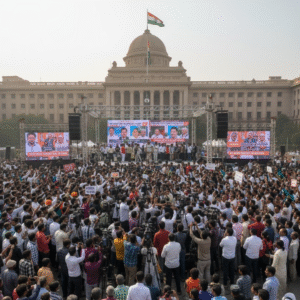Exposure vs. Earnings in the Age of the Stream
Mumbai – 2025
For Indian musicians, streaming platforms have brought both freedom and friction. On one hand, artists can now reach global listeners without a label, radio station, or film studio. On the other,stream counts don’t always translate into sustainable income.
As Spotify, Apple Music, Gaana, JioSaavn, and YouTube dominate music consumption in India, they are quietly rewriting the financial architecture of the industry—shifting power from sales and stage shows to algorithms and payouts-per-stream.
But in this reshaping, many Indian artists are asking:Who truly benefits from the streaming revolution?
The Royalty Math: What a Stream Pays
According to industry estimates (2024), here’s how much Indian artists typically earn per stream:
- Spotify: ₹0.13–₹0.18
- Apple Music: ₹0.22–₹0.28
- JioSaavn/Gaana: Lower than global platforms, often bundled with telco partnerships
- YouTube (via Content ID): Approx ₹0.10–₹0.12 per stream, variable by region and engagement
To earn ₹1 lakh from Spotify alone, an artist needs over7 million streams—a threshold only a small percentage of creators cross without label support or viral breakthroughs.
Revenue Distribution: Not Always in the Artist’s Favour
Streaming royalties are usually divided among:
- Platform commission
- Label or distributor
- Publisher (lyricist/composer rights)
- Performer (vocalist/producer)
Independent artists who self-publish via platforms likeDistroKid,CD Baby, orTuneCoreretain more control, but still face deductions for aggregation, taxes, and foreign exchange fees.
Signed artists often receiveonly 20–30% of streaming royalties, depending on contract terms.
The Indian Challenge: High Streams, Low Payouts
India is one of the largest music-consuming countries in the world—but withsome of the lowest average revenue per user (ARPU).
Due to:
- Massive free-tier usage
- Ad-supported models
- Bundled music access through telecom providers
…theeffective per-stream payout in India remains significantly lower than Western markets.
This creates a paradox: artists can have millions of listeners but struggle to monetize meaningfully.
The Hidden Stars: Composers, Lyricists, Session Musicians
The streaming model often overlooks contributors beyond vocalists.
- Lyricists and composers rarely receive equal metadata credit or backend royalties
- Background score composers are almost always unpaid through streaming unless OSTs are separately listed
- Session artists (tabla players, violinists, etc.) receive flat fees—no residuals
This undervaluation isstructural, not accidental, and requires reform through proper rights registration and publishing agreements.
Emerging Solutions
- Collective Rights Management Bodies
Organizations like IPRS (Indian Performing Right Society) are growing in influence, but more widespread participation and enforcement are needed. - Direct Artist-Fan Models
Platforms like Bandcamp, Patreon, and NFT-backed ownership tokens are giving some musicians a way to bypass low payouts. - DSP Accountability
There is increasing pressure on streaming platforms to:- Improve metadata accuracy
- Provide transparent royalty dashboards
- Offer pro-rata and user-centric payment models
The Way Forward
India needs areformed digital music economy—one where visibility doesn’t come at the cost of viability.
As audiences grow and platforms expand,fairness must scale alongside fame.
Because when the music plays, everyone listens. But when the money flows—only a few still hear the sound.












